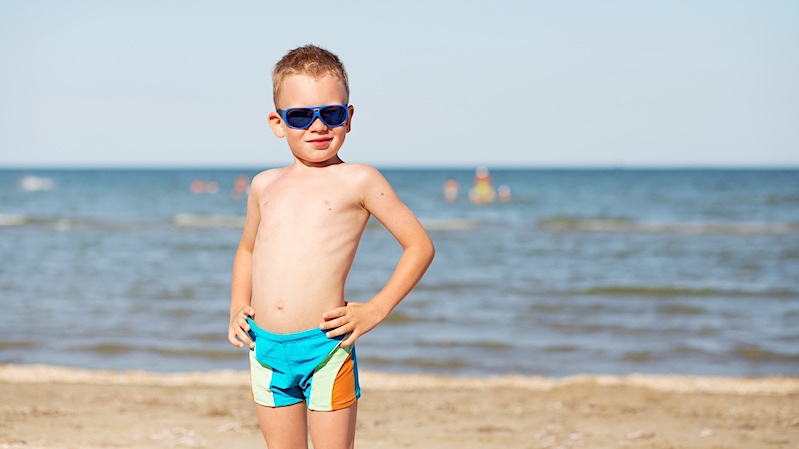After a winter that seemed to hang on well past its ‘best before’ date, it’s wonderful to see the arrival of warm, sunny days. While we want to enjoy the summer sun, it is important to protect our skin, as UV radiation present in sunlight is an environmental human carcinogen. Check out these 12 sun safety tips for you and your family.
Skin cancer is the most common form of cancer affecting all humans, and sadly, the number of people affected is increasing. Melanoma, the most dangerous of skin cancers, has doubled in rate over the past 30 years, and Canadians born in the 1990s now have a 3x higher lifetime risk of developing skin cancer over those born in the 1960s.
12 sun safety tips:
- Protect children’s skin. Even one bad sunburn during childhood or adolescence can increase your risk of developing melanoma later in life
- Avoid the mid-day sun
- Wear a hat and protective clothing – dark, tight-weave, and dry fabrics are best
- Wear sunglasses
- Use shade devices such as umbrellas and awnings
- Watch out for reflected sunlight! Sitting poolside under an umbrella, out boating with a hat on, you may think you’re protected but the reflected sunlight can burn your skin
- Wear sunscreen – minimum SPF 30, and apply every two hours and after swimming
- Choose a sunscreen that indicates it has UV-A and UV-B protection, or broad spectrum protection
- Be aware of the medications you’re taking. Some medications can increase your sun sensitivity. Some antibiotics, anti-depressants, retinols, etc, can make your skin more sensitive to the sun
- Extra care is required to protect your skin after some medical aesthetic treatments and when using certain skincare products
- Your skin will be extra sensitive after resurfacing treatments like laser, intense pulsed light, microdermabrasion and chemical peels
- If you’re using skincare to treat acne, or products that contain retinol, acids, hydroquinone, and even some essential oils, your skin may be more sensitive to the sun
In addition to skin cancer, UV radiation also causes aging of the skin, including damage to the collagen and elastin of the skin, increased pigmentation (sunspots), and damage to superficial blood vessels. These signs of skin damage can be reduced using a range of medical aesthetic treatments. For personalized skin care and sun safety recommendations, book a free skincare consultation with our registered nurse, Nadia Zinchuk, who specializes in medical aesthetic treatments and skin care.
BOOK A FREE SKINCARE CONSULTATION
What kind of sunscreen is best?
Sunscreens are divided into two main categories – physical and chemical.
- Physical sunscreens block UV rays, reflecting them away from your skin. Physical sunscreens are most appealing as they do not absorb into the skin, but sit on the surface and protect against both UV-A and UV-B rays. These consist of zinc oxide and titanium dioxide, which are now quite light in consistency and not as obvious on our skin as they once were. Gone are the days of the white, thick, sticky sunscreens, thank goodness!
- Chemical sunscreens absorb UV light and change the electromagnetic radiation effect
Regardless of whether you choose a physical or chemical sunscreen for sun safety, the SPF factor is important, however it only indicates the protection factor for UV-B. Be sure to read the label and choose one that notes it also has UV-A protection, or broad spectrum protection.
SPF 30 is the minimum advised by the Canadian Dermatology Association for skin cancer protection and is generally enough to prevent sunburn. However, higher SPFs will give more protection from pigmentation and aging of the skin.
SPF 30 is the minimum advised by the Canadian Dermatology Association for skin cancer protection and is generally enough to prevent sunburn. However, higher SPFs will give more protection from pigmentation and aging of the skin.
Our INLIV medical aesthetics reception offers several medical-grade sunscreen options, as well as make-up with sunscreen protection. Drop by and speak with Raeshell, our medical aesthetics coordinator to select the products best suited for you.
What you need to know about UV light:
- Both UV-A and UV-B rays cause damage to the DNA of skin cells, which can lead to the formation of skin cancers
- UV-B causes sunburn while UV-A does not, and thus is called the “silent killer”
- 95% of UV light reaching the earth’s surface is UV-A (the ozone layer partially absorbs UV-B and almost completely absorbs UV-C rays)
- Normal window glass does not protect from UV-A
- UV radiation increases 4% with each ascending 300 meters of elevation
- Over 90% of UV radiation penetrates through clouds
- For every 1% depletion in the ozone layer, there is a 1% increase in skin cancers and melanoma mortality
This summer remember to slip, slop, slap, seek, slide. Slip on a shirt, slop on some sunscreen, slap on a hat, seek shade, and slide on some sunglasses.
Practice sun safety for you and your family, and enjoy a happy, healthy, active summer!


